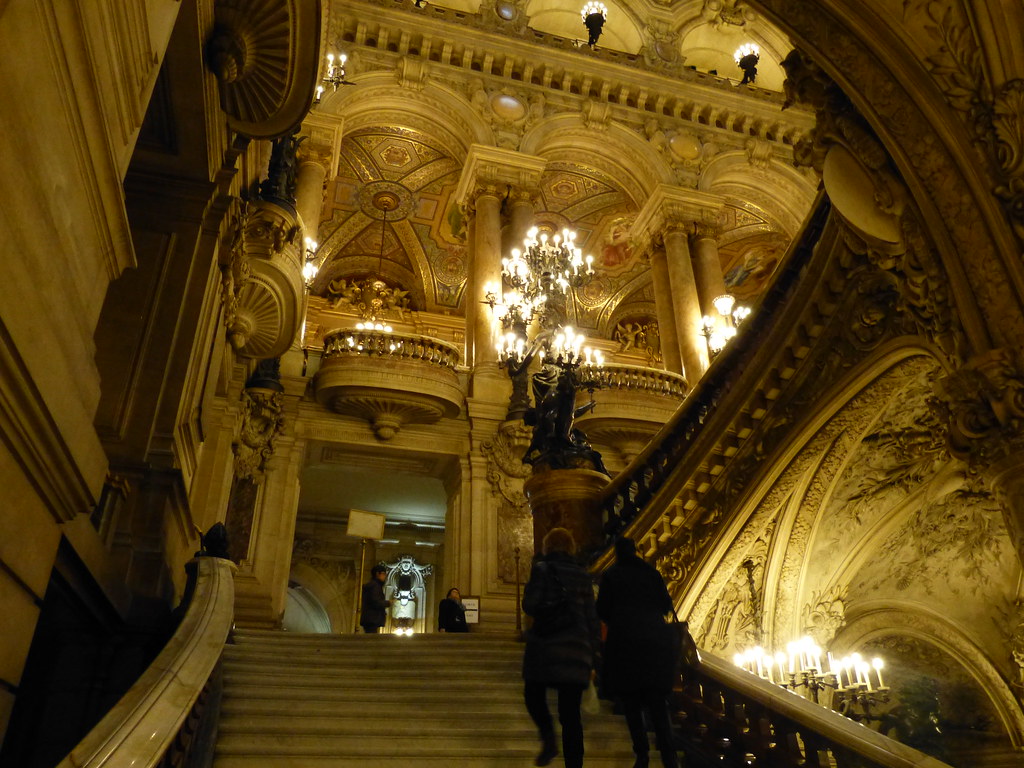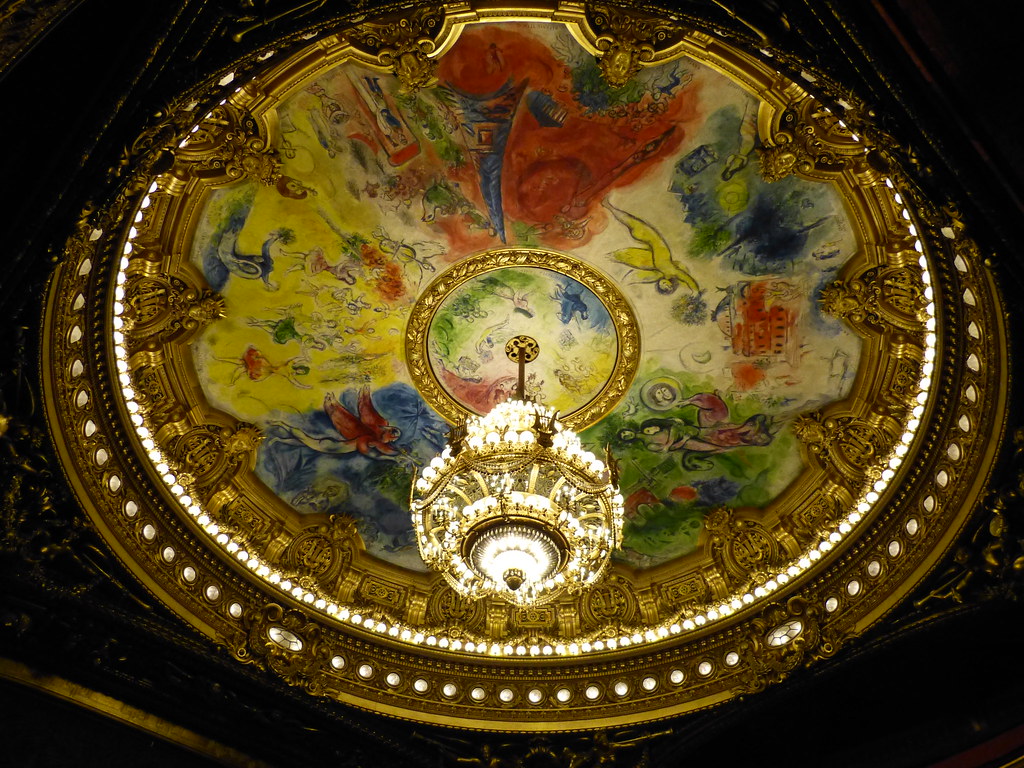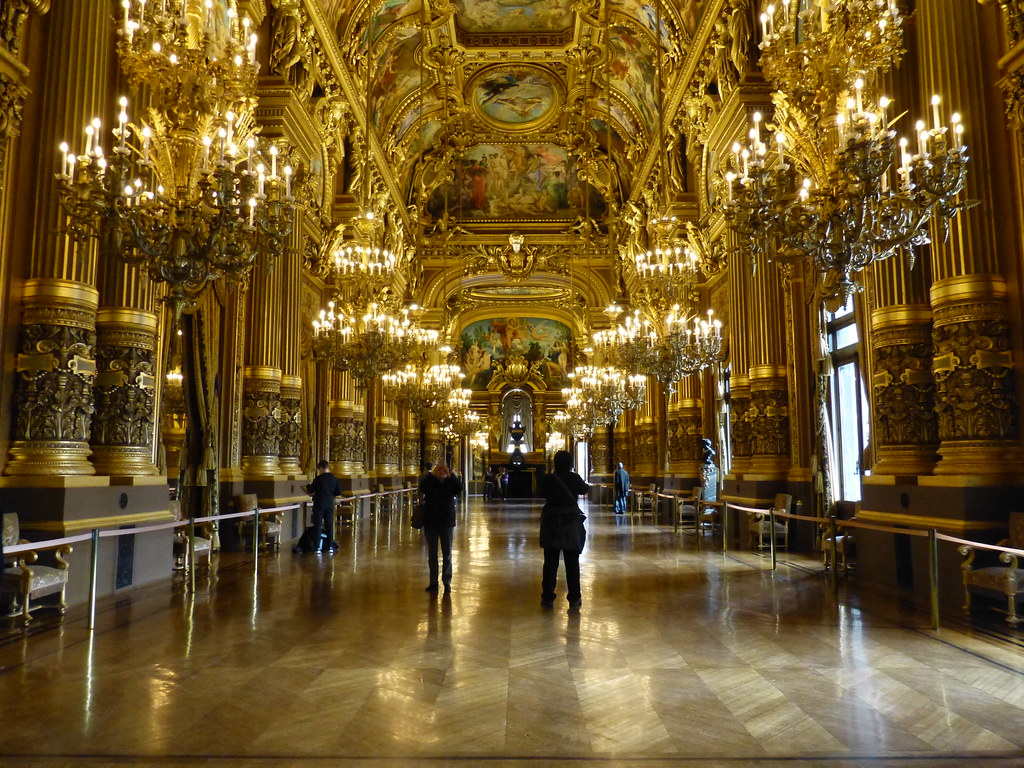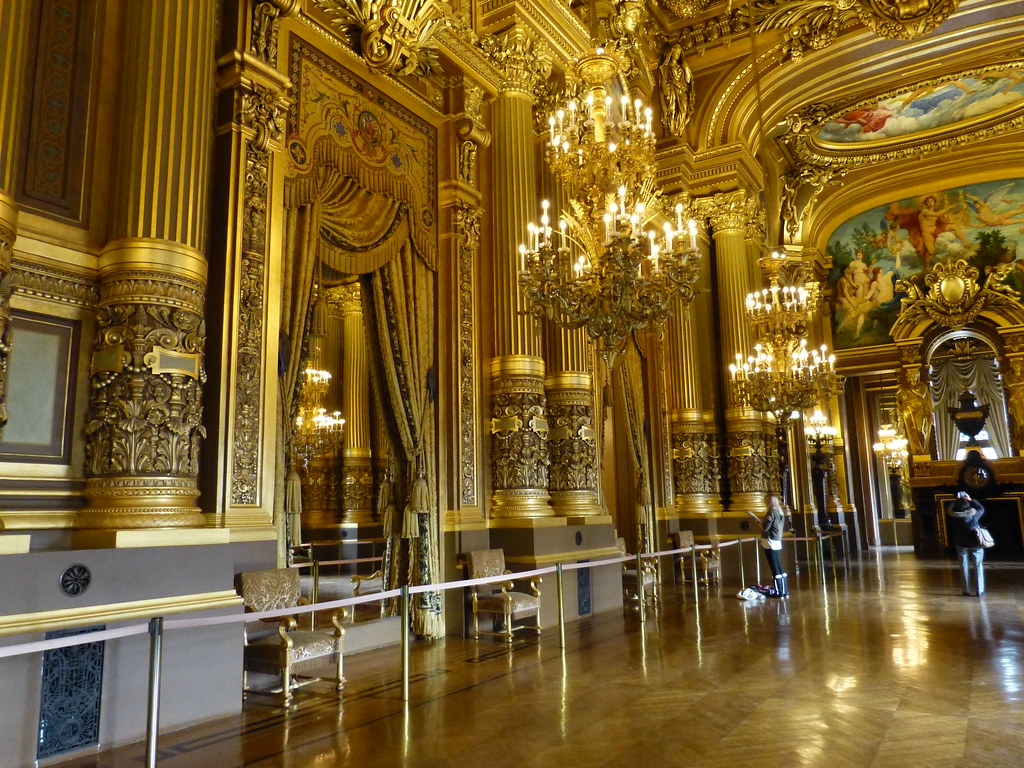I'd like to start my posts on my recent trip to Paris with one of the least obvious among my visits, that to the fascinating Palais Garnier, also known as the Opéra. Paris has two opera houses, the other one being Opéra Bastille, but this is the most interesting from a historical and artistic point of view. It is situated at the end of Avenue de l'Opéra (which starts outside the Louvre), and there is a special metro station dedicated to it, called Opéra. It is curious that the venue is now used primarily for ballet, rather than for opera, for which it was expressly designed in the 19th century.
 |
| The opera house seen from the busy street in front of it |
Every time you have seen adaptations of the Gothic novel The Phantom of the Opera it is this opera house they are referencing. Some of the legends and episodes related to the palace were integrated in the novel (and in the adaptations). One of the counterweights of the magnificent and big chandelier in the auditorium, for instance, really crashed and killed a member of the audience in 1896!
The entrance fee is €10 for an unguided visit, and €13,50 for a guided one. Unfortunately, Opéra Garnier is one of the few attractions that are not included in the Paris Museum Pass, of which I will speak in another post. There are automatic machines at the entrance, situated at the back of the building (they are doing some restoration works as of November 2013), making the queue practically nonexistent, at least in low season.
The history of Opéra Garnier is linked to that of the Second Empire established by Napoleon's nephew. Napoleon III had great projects for the renovation of the city, and one of them included a new grand opera house. When the competition for its realization was won by a young unknown architect, Charles Garnier, many people were surprised. Empress Eugénie was even disappointed that her favourite architect, Violet-le-Duc, did not win the competition. The works began in 1861, but the palace was inaugurated only in 1875.
The visit to the opera house includes access to the sumptuous foyers and avant-foyers (the halls where spectators meet during breaks or before the show), to the grand staircase, the library and the small museum, and of course the stage room, provided they are not rehearsing or performing. In the smaller avant-foyers there is a small exhibition with some of the dresses used in various past performances. People like opera singer Maria Callas and ballet dancer Rudolf Nureyev have made the history of this palace, so much that the funeral of the latter was held here.
 |
| The Grand Staircase |
The rooms of Palais Garnier can rival those of Versailles for refinement, golden decorations and opulence. The grand foyer particularly reminded me of the Hall of Mirrors in Versailles. You can easily imagine 19th-century French aristocrats climbing the grand staircase on the way to their favourite show, or enjoying a flute of champagne and chatting in the many beautifully-decorated halls. Some people think it is too much, and prefer other buildings of the period, but I was stunned with all the gold and the decorations.
The ceiling of the main hall was painted by March Chagall in 1964. For the occasion, a removable panel was put on the ceiling to cover the original frescoes. Even though Chagall is one of my favourite painters, I found his art in this particular place slightly out of place in this context. His flamboyant and apparently childish style is completely different from that of the palace, built more than a century before in the beaux-arts decor design.
 |
| The ceiling painted by Chagall with the big chandelier |
Would you like to visit Opéra Garnier during a visit to Paris? What do you think of the ceiling?


No comments:
Post a Comment